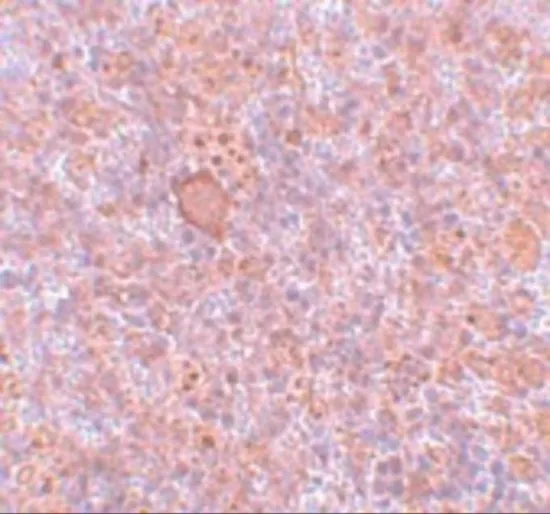CtIP antibody [C1C3]
GTX108857
ApplicationsWestern Blot
Product group Antibodies
ReactivityHuman
TargetRBBP8
Overview
- SupplierGeneTex
- Product NameCtIP antibody [C1C3]
- Delivery Days Customer9
- Application Supplier NoteWB: 1:1000-1:10000. *Optimal dilutions/concentrations should be determined by the researcher.Not tested in other applications.
- ApplicationsWestern Blot
- CertificationResearch Use Only
- ClonalityPolyclonal
- Concentration1 mg/ml
- ConjugateUnconjugated
- Gene ID5932
- Target nameRBBP8
- Target descriptionRB binding protein 8, endonuclease
- Target synonymsCOM1, CTIP, JAWAD, JWDS, RIM, SAE2, SCKL2, DNA endonuclease RBBP8, CTBP-interacting protein, retinoblastoma binding protein 8, sporulation in the absence of SPO11 protein 2 homolog
- HostRabbit
- IsotypeIgG
- Protein IDQ99708
- Protein NameDNA endonuclease RBBP8
- Scientific DescriptionThe protein encoded by this gene is a ubiquitously expressed nuclear protein. It is found among several proteins that bind directly to retinoblastoma protein, which regulates cell proliferation. This protein complexes with transcriptional co-repressor CTBP. It is also associated with BRCA1 and is thought to modulate the functions of BRCA1 in transcriptional regulation, DNA repair, and/or cell cycle checkpoint control. It is suggested that this gene may itself be a tumor suppressor acting in the same pathway as BRCA1. Three transcript variants encoding two different isoforms have been found for this gene. More transcript variants exist, but their full-length natures have not been determined. [provided by RefSeq]
- ReactivityHuman
- Storage Instruction-20°C or -80°C,2°C to 8°C
- UNSPSC12352203
References
- Kuo CY, Li X, Stark JM, et al. RNF4 regulates DNA double-strand break repair in a cell cycle-dependent manner. Cell Cycle. 2016,15(6):787-98. doi: 10.1080/15384101.2016.1138184Read this paper





